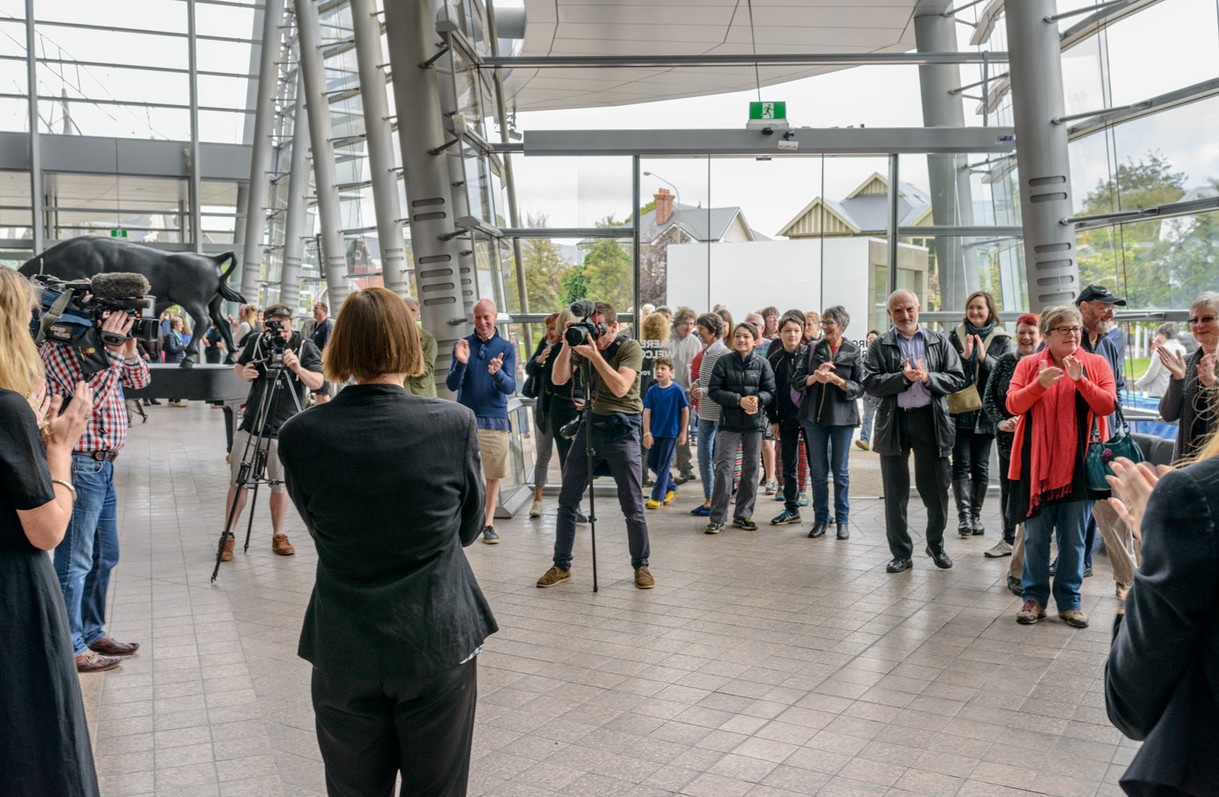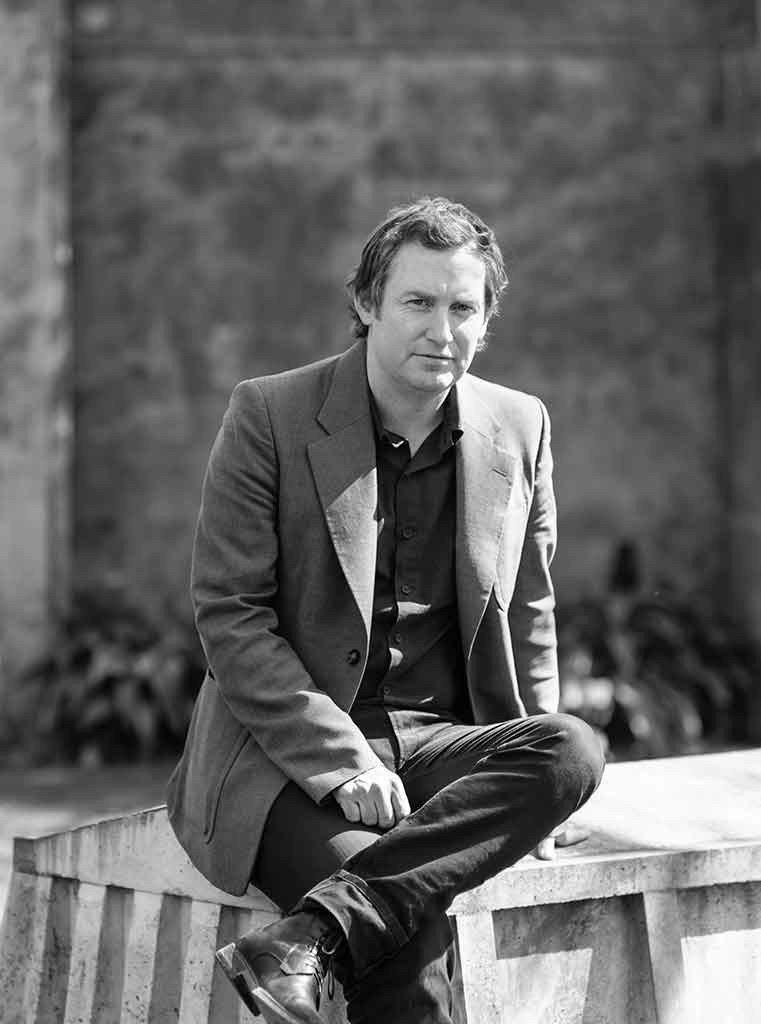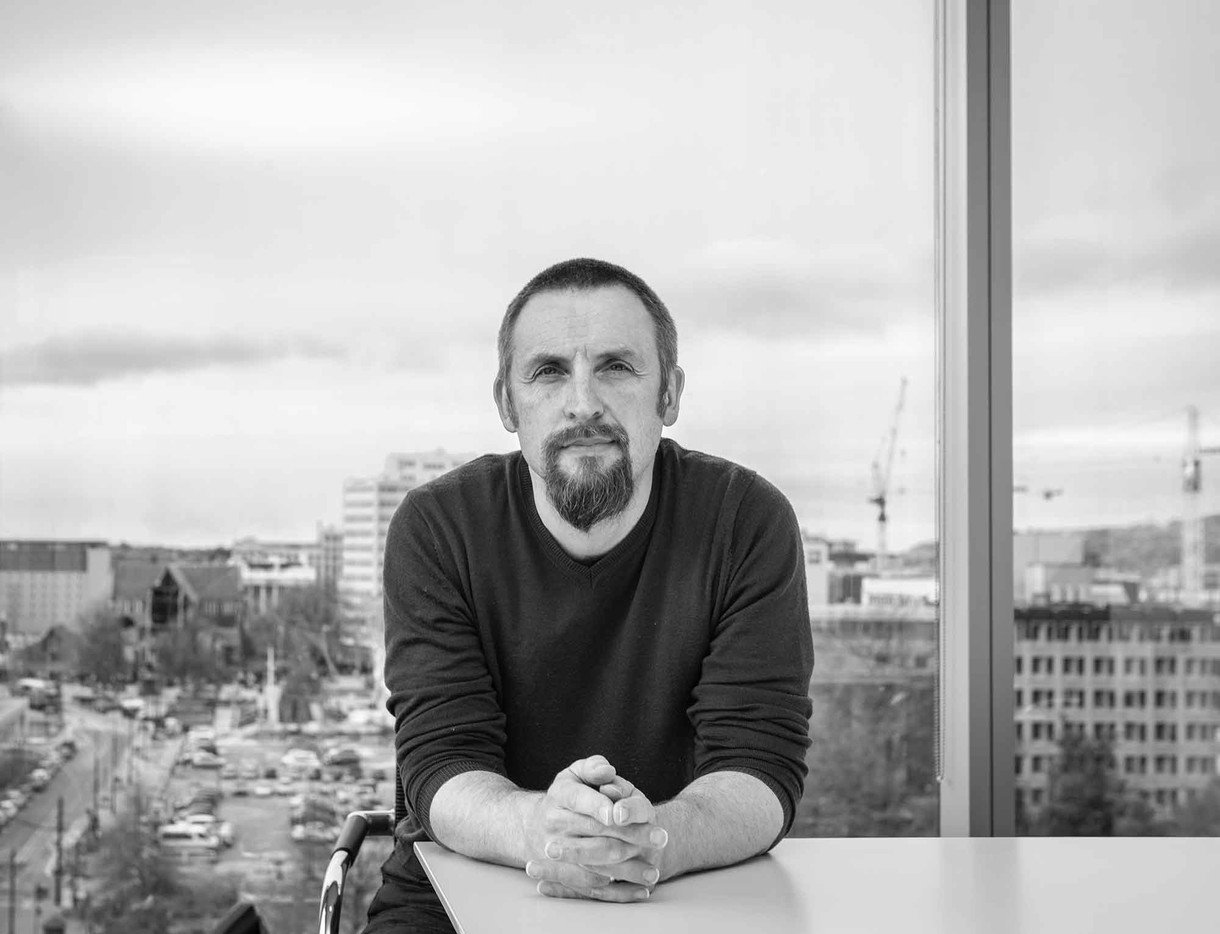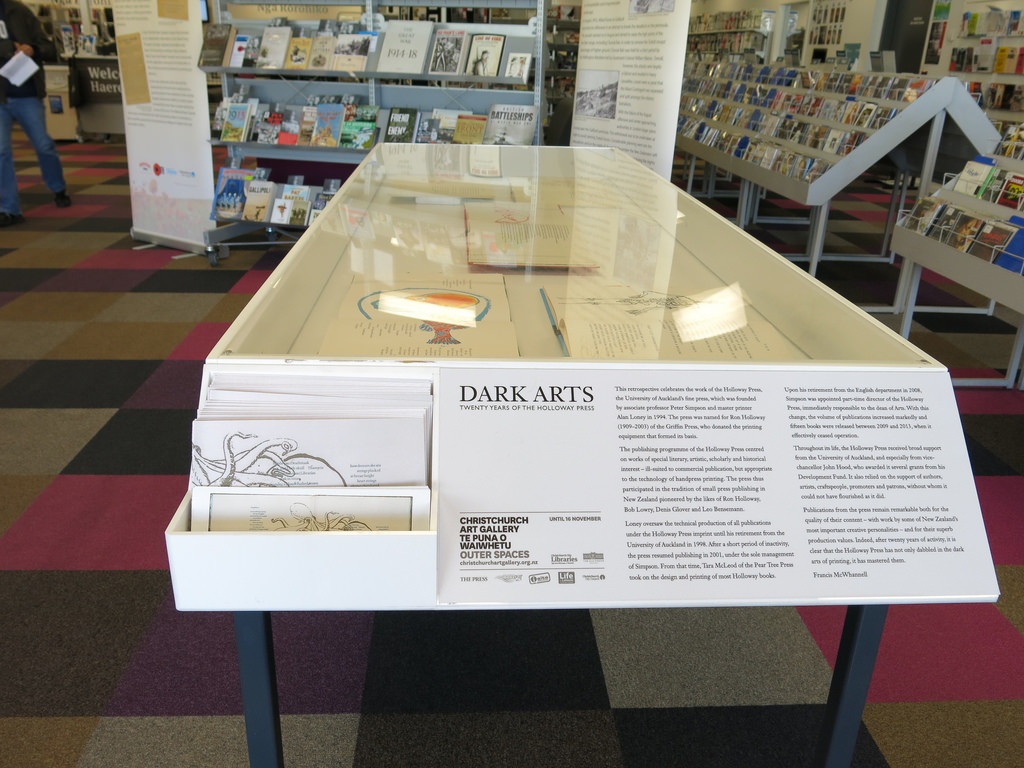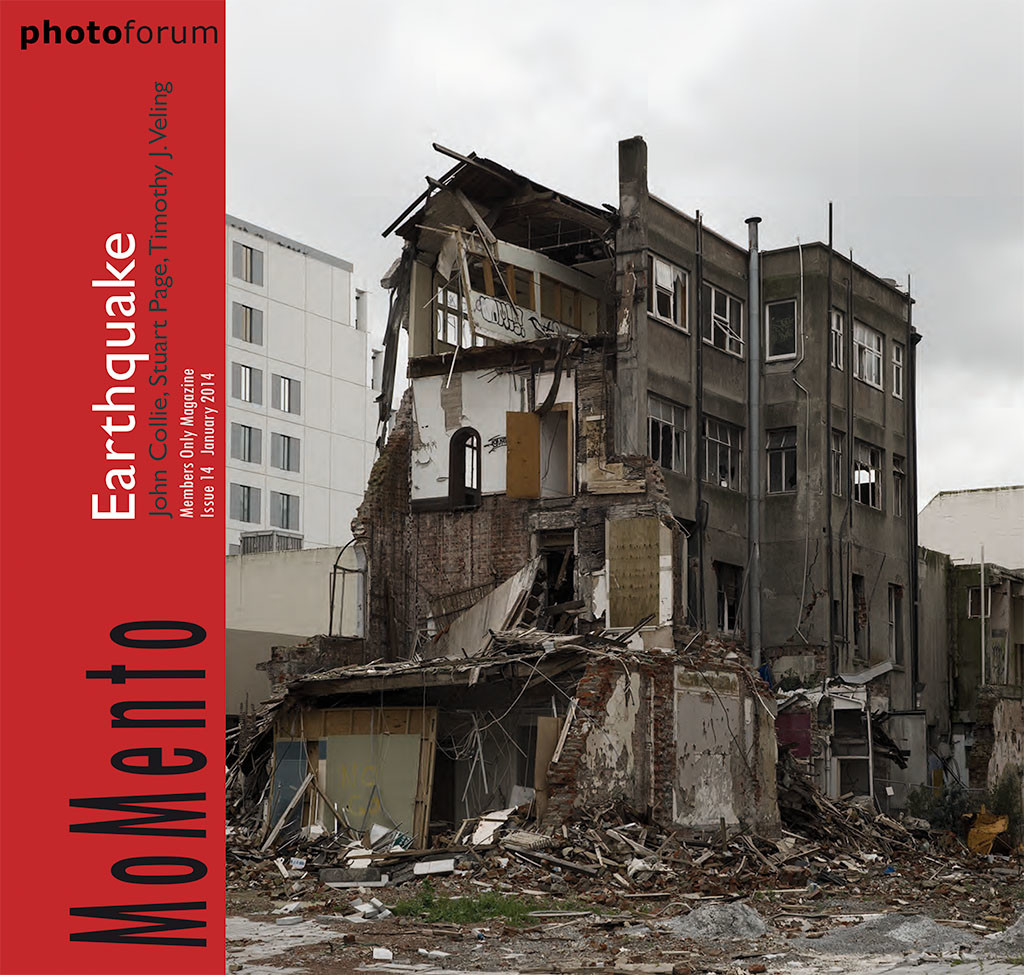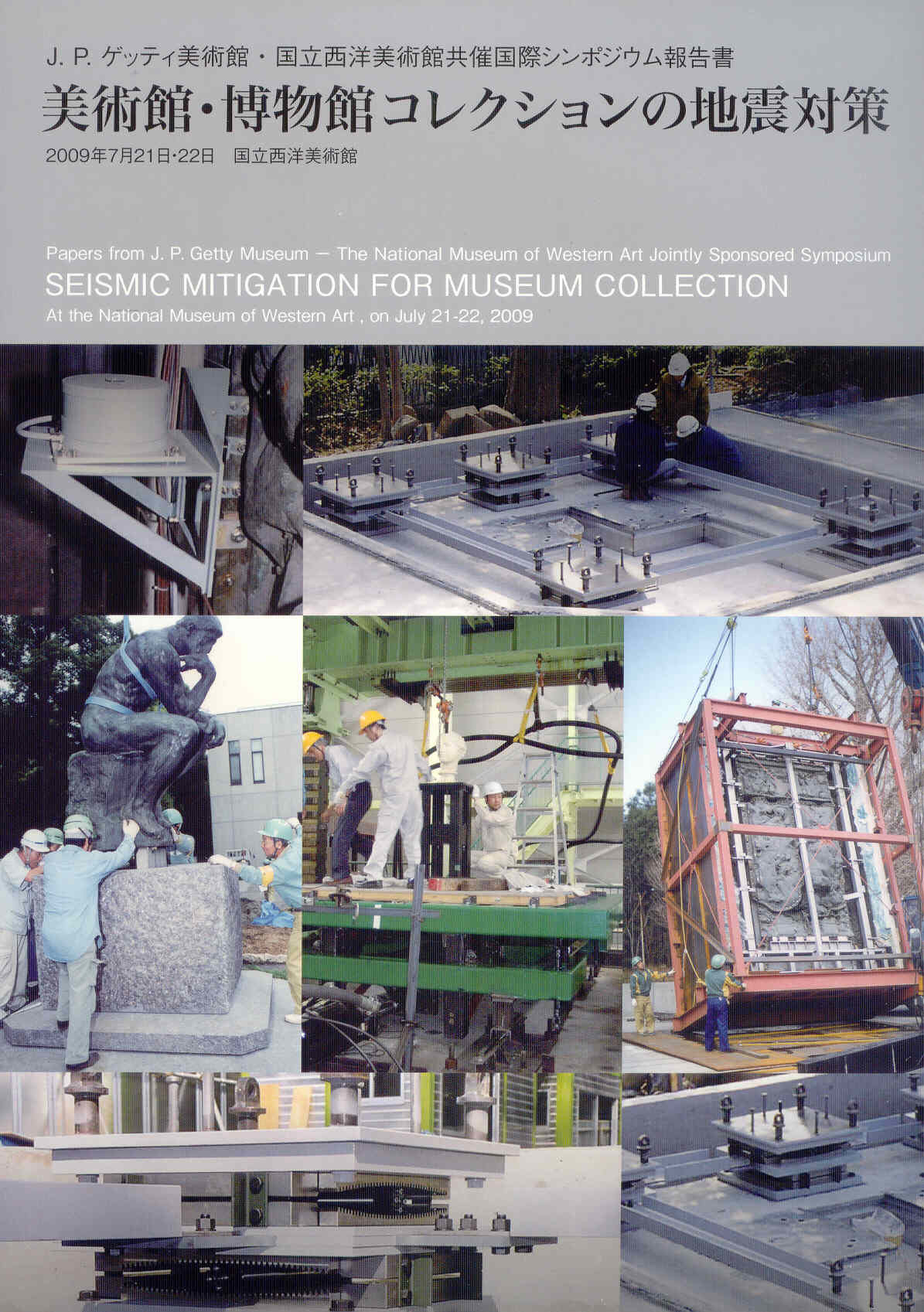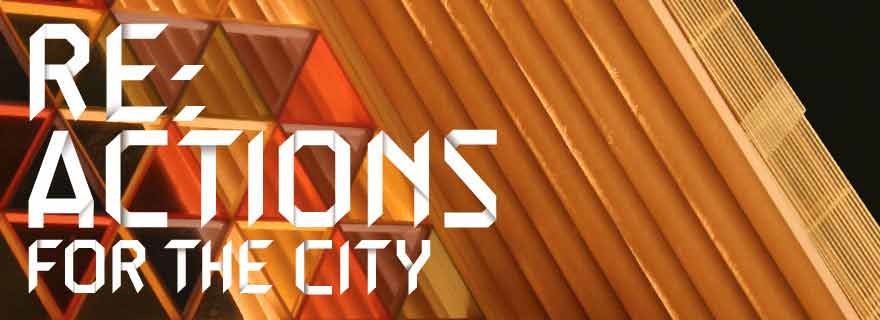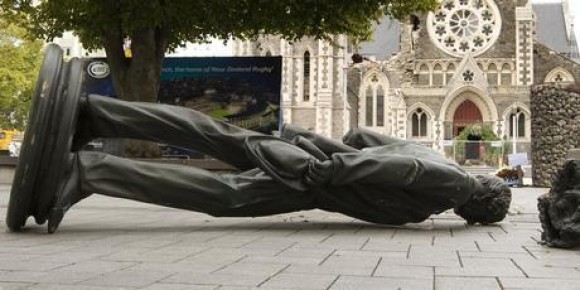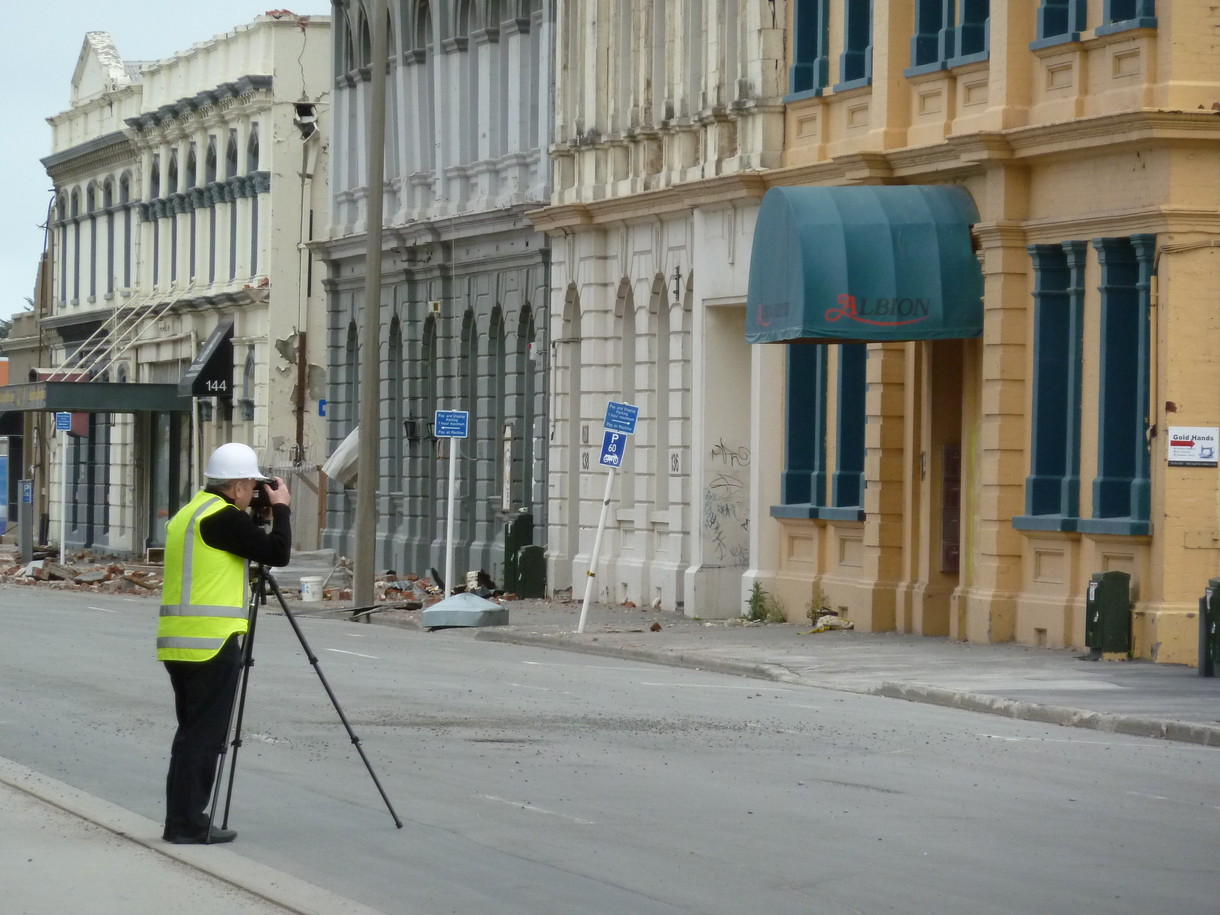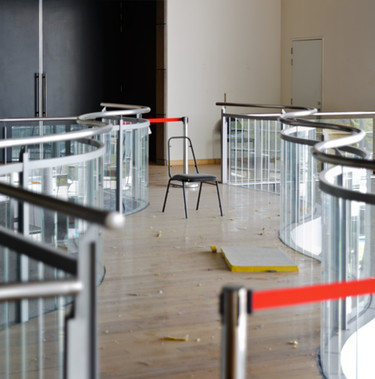
It’s our party and we’ll cry if we want to
On 10 May 2013, Christchurch Art Gallery Te Puna o Waiwhetū turns ten. Which is fantastic. But it's probably fair to say that there's a bittersweet quality to the celebrations around this particular anniversary, as it also marks two years and eleven weeks of closure for the Gallery, and catches us staring down the barrel of another two years without our home.
It's frustrating. And then some.
However, we're not going to let these little, ahem, inconveniences get in the way of our party. Populate! is our birthday programme, and it's our attempt to bring some unexpected faces and figures back to the depleted central city. Bulletin spoke to the Gallery's senior curator Justin Paton about what he really wants for the tenth birthday, what he finds funny, and what he really doesn't.
Bulletin: Let's start with a simple one: Why is the show called Populate!? Does the exclamation mark mean we're expected to shout it?
Justin Paton: No need to shout it. But the exclamation mark is certainly there to intensify the word, to make it as active and 'verby' as possible. On the art front, this is definitely a time for verbs not nouns: for art that gets out there and does something. The exclamation mark makes 'populate' into a command, a good-natured call to arms. That call goes out to the audience, of course, who we hope will come into the city to see some of the things we're presenting. But it's also a challenge to ourselves, as we attempt to produce more art in and for Christchurch. One of the most striking things about the inner city now is that it's depopulated, so we wanted to play directly with the idea of human presence. Art as a way of populating a too-quiet city with faces and figures – albeit idiosyncratic ones. My hope for viewers is that exploring the birthday programme will be like bumping into a series of interesting strangers.
B: Is Pop art also in there in the title?
JP: Yes, glad to embrace the Pop in populate, especially since Pop was so interested in urban subjects. There's also a nod to pop-up shops and galleries, which are everywhere in post-quake Christchurch. I loved comedian Dai Henwood's comment that Mayor Bob Parker's memoir about the earthquakes should really have been a pop-up book. I also have to admit that, after naming the programme Populate! we wondered nervously about whether a vandal might change the 'p' to a 'c' on posters. But given the dearth of people in the central city, that too could be a useful injunction...
B: How does it feel to be celebrating a birthday when the Gallery's been closed for more than two years now? When the earthquake happened did it even cross your mind that we'd still be in this situation at this point?
JP: It's funny, in a bleak way, to look back at the early days of the Gallery's closure and think how optimistic we were. Would we be closed for two months? Three months? Could it even be six? By June or so we'd planned a full reopening programme: community murals, a barbecue, a complete rehang of the collection. We'd printed brochures and begun distributing them. And then the bad news started to trickle down. Anything resembling solid information was very hard to come by (although it's interesting what people leave on photocopiers). But you didn't need to be a sleuth to see what was coming. Plenty of us were learning how long it would take for repairs on our own homes to begin. Considering the size of the Gallery building, the preciousness of its contents, and the complexity of its ownership and insurance, it was easy to guess how much more complicated and slow-moving that fix-up was going to be. So the expanded Outer Spaces programme wasn't just for the community. It was also an internal rallying exercise and an act of productive desperation – a way of convincing ourselves we still existed.
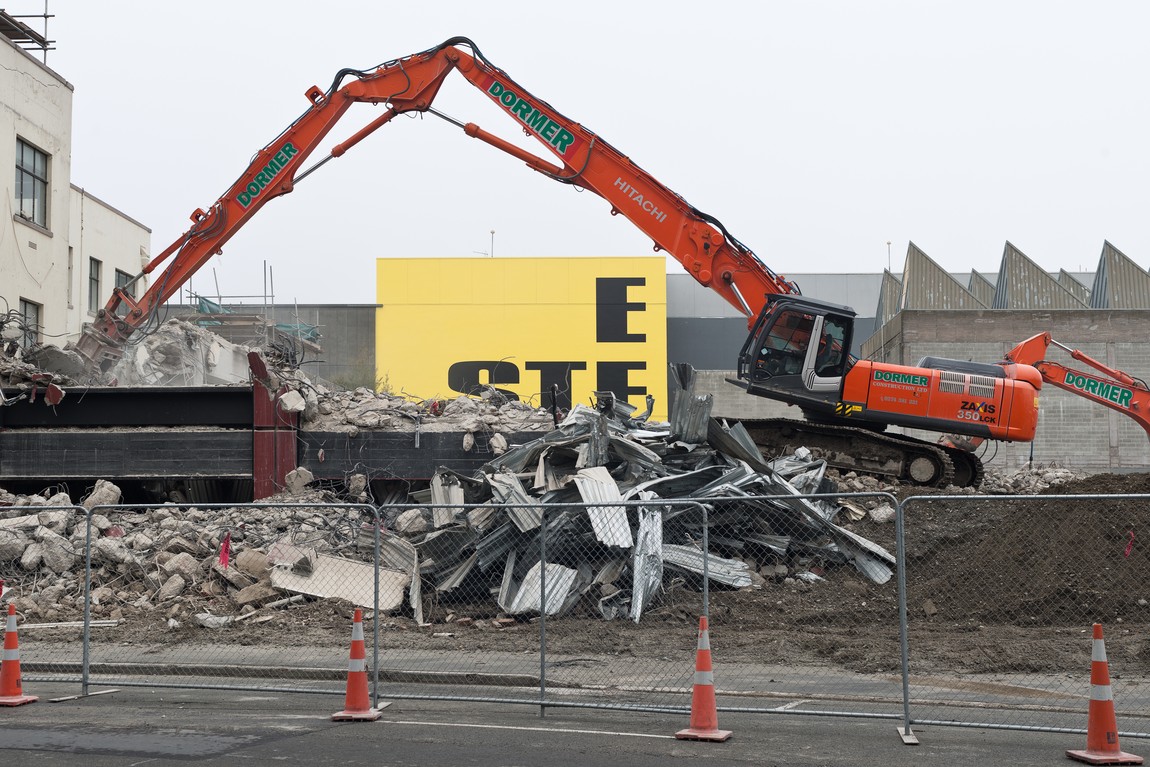
Demo crews work in front of Kay Rosen's Here are the people and there is the steeple in 2012
B: How does a big gallery suddenly equip itself for making and showing art outdoors?
JP: One of the problems with big galleries, or art museums as they're called overseas, is that they don't do anything suddenly. They're prone to isolation and inertia; they fall in love with their own politics and protocols. It's hard to talk about the value of change without getting into Oprah Winfrey territory, but I think it's great that, having been moved in the worst way by the earthquakes, the Gallery has moved positively to a new way of doing things. We've realised more than fifty Outer Spaces projects in two years. Some have been small, like the poster runs and night-time videos, and some have involved huge efforts, like Felicity's Rolling Maul series of local artist exhibitions. But all of them, by pre-quake standards, exist way beyond our old comfort zones. We're the opposite of risk-averse at present. We'll try anything, almost.
B: There are a number of organisations working to enliven spaces around the city. The Gallery has worked with Gap Filler before on a number of occasions, one being the Wayne Youle mural in Sydenham, and a number of elements in the Populate! programme have been aided by Life in Vacant Spaces. Can you tell me where the Gallery fits into this mix?
JP: I don't think anything fits right now, and that's a good thing. At the level of art, many kinds of organisations and individuals are out there throwing their time and idealism and resources at the city. Every drive through town turns up some surprising image or intervention, and you're often uncertain who's responsible for which bit of art. In fact there are so many projects firing out there now that the main problem may be congestion, as artists jostle for the chance to make their mark on prime sites before development begins. We encountered this with the big Wayne Youle wall, where it turned out that several other artists had been eyeing the same space that Gap Filler had earlier secured. But a sense of goodwill and shared purpose seems to have kept territorialism at bay and buoyed the various projects along. Among the things the Gallery can bring to this landscape are people, know-how and resources. What it can bring especially is its relationship with artists. When things are happening at speed in an unpredictable setting, artists have to know they're in good hands.
B: In the last issue of Bulletin Lee Stickells talked of guerrilla interventions within the city. But in Christchurch at present it seems that the guerrilla is now the establishment. Do the structures and systems that are now appearing around these strangle the frontier spirit, or add essential quality control?
JP: Would-be makers of public art need all the help they can get to make things happen in such a messy environment. But I think things are shifting at present. I suspect we'll look back on this period with (very qualified) nostalgia, as a time when the rules for public art in the new city weren't yet fully worked out. A wild west moment, when official productions were contending for space with unlicensed forms of creation and also with things that are not art but look a hell of a lot like it. As commercial development swings into action, the public art landscape will become more regulated and bureaucratised. And, as that happens, what art means in the city will also change. In the early post-quake days, I think art mattered simply because it was art – a sign that some humans were home and determined to keep things interesting. But we can expect to see artists enlisted more and more as the standard-bearers of 'development'. Along with this will come the institutionalisation of a particular kind of user-friendly and community-spirited public art – the kind of thing that bolsters the city's image as a top ten Lonely Planet destination. That's fine. But you'd have to say it's also a great time for a really prickly, antagonistic public artist to get out there and start rubbing the city up the wrong way.
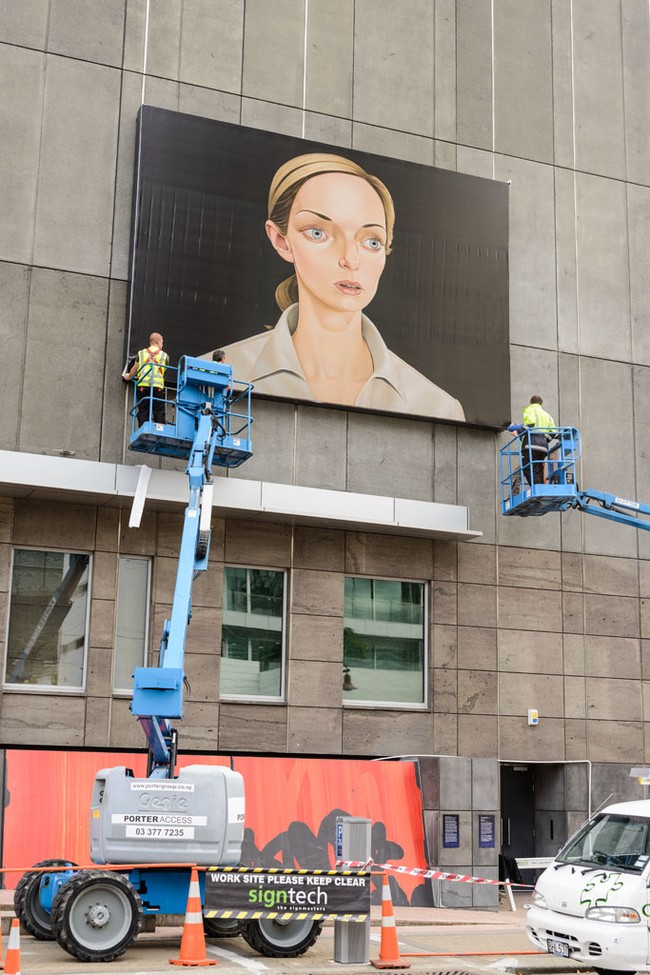
Installing Peter Stichbury's NDE in April 2013
B: But the birthday programme seems more celebratory than prickly...
JP: That's true, none of the projects are directly polemical, but I hope at least that they help to keep things strange in Christchurch. When I was talking with Ronnie van Hout about his sculpture Comin' Down, he started recalling the do-it-yourself monuments and pieces of not-quite-art that defined his mental map of the city as a kid – things like the legs sticking out of a stack of tyres outside a tyre yard in Rolleston, or the wacky civic 'sculptures' in Brighton Mall. My own list would include the big black boat that used to sit behind a fence on Ferry Road and the Feejee Mermaid in a grimy old case in the Brighton Mini Zoo. Whether by intention or accident, these things were a relief to come across; they hinted at another city within the city – an older, weirder Christchurch. Jo Langford's recent SCAPE project, the city of lights above Cranmer Square, did something like that. And I'd consider our work done if even a few of the things in the birthday line-up found their way onto some people's inner maps of Christchurch today.
B: It strikes me that art is competing for attention with projects that are more social in intention (I'm thinking of things like the Dance-OMat here) but are judged on similar criteria in terms of their visual impact or the impression they make on the public. Does that have an impact on the types of projects you commission or engage in?
JP: Well it's quite possible to argue that those social projects are art too. They might have more art in them – more imagination and energy – than 'straighter' projects like murals or sculptures. Either way, I think competition is good for public art in any city and in this city especially, where the public art dialogue for too long centred on big, permanent projects and the inevitable 'negative reactions' to them. The more people and groups that are out there doing what they do distinctively, the more all the other people and groups are compelled to sharpen up and define their own acts. For instance, since a lot of new public art in the city has been semi-abstract, it felt to us like a good time to explore portraiture and figuration. The human face and figure remain such powerful tools for artists in public space; that's why advertisers use them all the time. Also, with several of the city's well-known statues still missing from their plinths, it seemed timely to wonder what kind of monuments or counter-monuments might be wanted in the new Christchurch.
B: We've noted the loss of a number of those historic statues around the city in this magazine over the past couple of years. But surely public art today has moved on from monuments to the worthy figures of yesteryear?
JP: It has. And if you read almost any blurb or statement accompanying a public art project today, it will tell you that the artist is rejecting the monumental and all its associations with permanence and singularity – both coded 'bad' in the current spectrum of public- art values. But the problem is not monumentality versus non-monumentality. It's blandness versus interestingness, or inertia versus liveliness. If you'll excuse the mixed metaphor, 'the monumental' has been turned into a kind of straw man, which commentators today freely vilify in order to valorise other kinds of practice. But figurative sculptures don't have to be permanent. They too can be moved, changed, re-sited. And non-monumental sculptures can be just as space- and resource-hungry, and just as lame, as any monumental work. What's interesting today, I think, is that the lessons of 'sculpture in the expanded field' – lessons of impermanence, site-responsiveness and process – have been absorbed by sculptors of all kinds. Antony Gormley is one of the best examples. He might cast figures in bronze, but those figures live emphatically in the expanded field, and they don't live there forever.
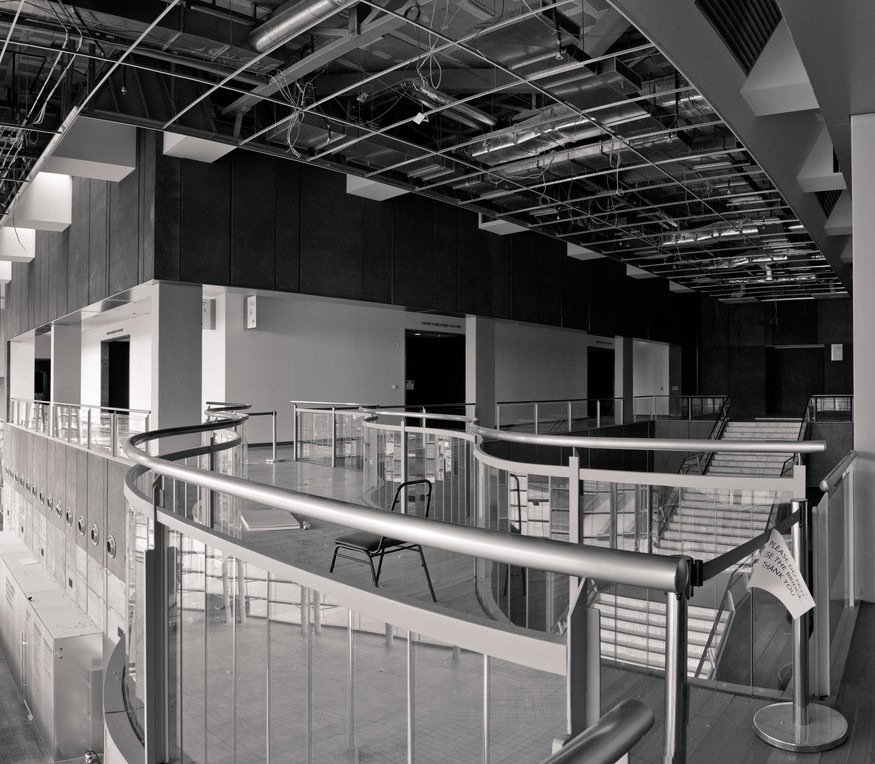
B: So you don't think we should be looking to make more permanent additions to the cityscape at this point?
JP: No, I don't think anyone should. One of the most welcome developments in public art commissioning in recent years has been the imposition of fixed life-spans on works. There is nothing more depressing than a big bit of art that's been left out on stage for too long. Things being as they are in Christchurch, I'd prefer us to think of public artworks – even if they're made of tonnes of steel – not as fixtures but as performances. The operative model here should be stand-up comedy. Get out there on stage, do your best to get a response, and then get off before you wear out your welcome. The problem is, it's hard to stay funny when you're staring down an army of engineers, fundraisers, health and safety inspectors, and officials murmuring 'resource consent'.
B: There's a definite bias toward those who 'stay funny' in the Populate! line-up. Art is meant to be a serious matter. Is it okay to simply laugh at it?
JP: I think laughter is one of the most serious responses we can have to art, all the more so because it wells up involuntarily. It's tricky, of course, because what's funny to me might not be funny to you; there's that great Mel Brooks line where he says something like, 'Tragedy is when I get a paper cut, comedy is when you fall down a manhole and die.' The humour that runs through the tenth-birthday programme is certainly of the bent, gallows variety, which I guess could be considered as a coping mechanism in the often grim urban setting. It's about the comedy of being 'only human' in a world where things don't always go your way. The figurehead here has got to be the one in Yvonne Todd's new image, Mood Sandwich, which affects me the way all her images do. I laugh, then wonder if it's okay to be laughing, then wonder what it says about me that I laughed in the first place. In art I think that's the best kind of laughter – the kind that brings some nervousness in its wake, because we feel it's revealed something we hadn't acknowledged before in ourselves. By pushing conventions and assumptions to extremes, the best comedians expose the absurdity of the rules we live by. And I think some of the best contemporary artists do something similar. On top of all this we might say that the plight of public art generally is comic, or maybe tragicomic. Once upon a time it had this assured place at the heart of civic life and architecture. These days it's not sure where it belongs. It's down off its plinth and out on its ear. And the earthquakes have only increased that sense of instability.
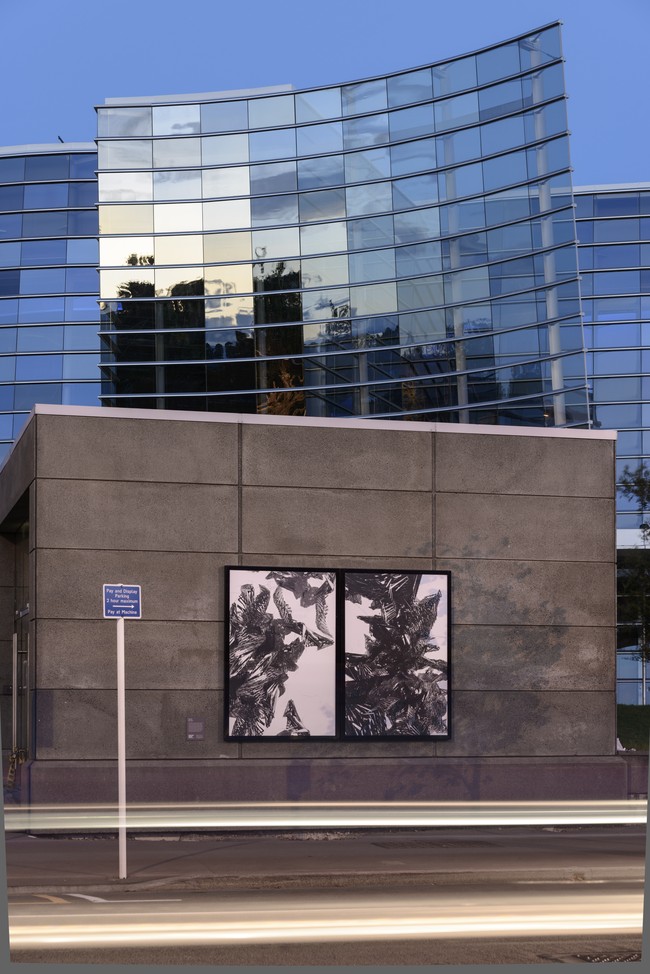
Toshi Endo Wolf-Cub 2013. Digital file. Reproduced courtesy of the artist
B: The Gallery is essentially a collecting institution, and we have continued to make acquisitions for the city's collection over the duration of our closure. But our lack of suitable display space means that in many ways we are currently forced to operate primarily in the territory of smaller artist run spaces or dealer galleries – where does that leave us?
JP: Well, on one hand it leaves us in a state of painful anticipation, endlessly planning and re-planning the reopening exhibitions in which we get to show these recent gifts and acquisitions. On the other hand, it's nudged – or maybe shoved – us into doing new things. Finding possible exhibition spaces, refitting them, and then filling them with things other than collection objects. It'd be a total fib to say the process doesn't come with major frustrations and complications – all that stuff about signage, monitoring, permissions and public access that you never have to worry about in a purpose-built building. But with luck the fact the venues are unusual makes the art seem more interesting when you finally reach it. Tony Oursler, for instance, is a wonderful artist to encounter in a normal gallery setting. But there's going to be something very memorable about seeing his works blinking and muttering away to themselves in the stairwell and corridor of a historic Christchurch building.
B: Director Jenny Harper often refers to the extraordinary high the Gallery was on just before the 2011 earthquake, with attendance records constantly being broken. Do you think that momentum has been lost? Does it matter?
JP: That kind of cultural momentum takes a long time to build but can disappear alarmingly fast. And in the first few months of the Gallery's closure we could feel it ebbing by the day. It could give you a panicky, block-the-exits sort of feeling, as though something irreversible was in train – and sometimes it still does. I mean, it's our tenth birthday coming up, and we've now been closed for more than a fifth of that time. Two days out of every ten that this building has existed. That's an alarming statistic. But what are you meant to do? It's our party and, as the song says, we'll cry if we want to, but we're not going to mope for too long. All things considered we are lucky to be here with the spirit and wherewithal to still be doing what we like doing. There are more settled places in the country to be presenting art, but I can't think of any that are more interesting.






